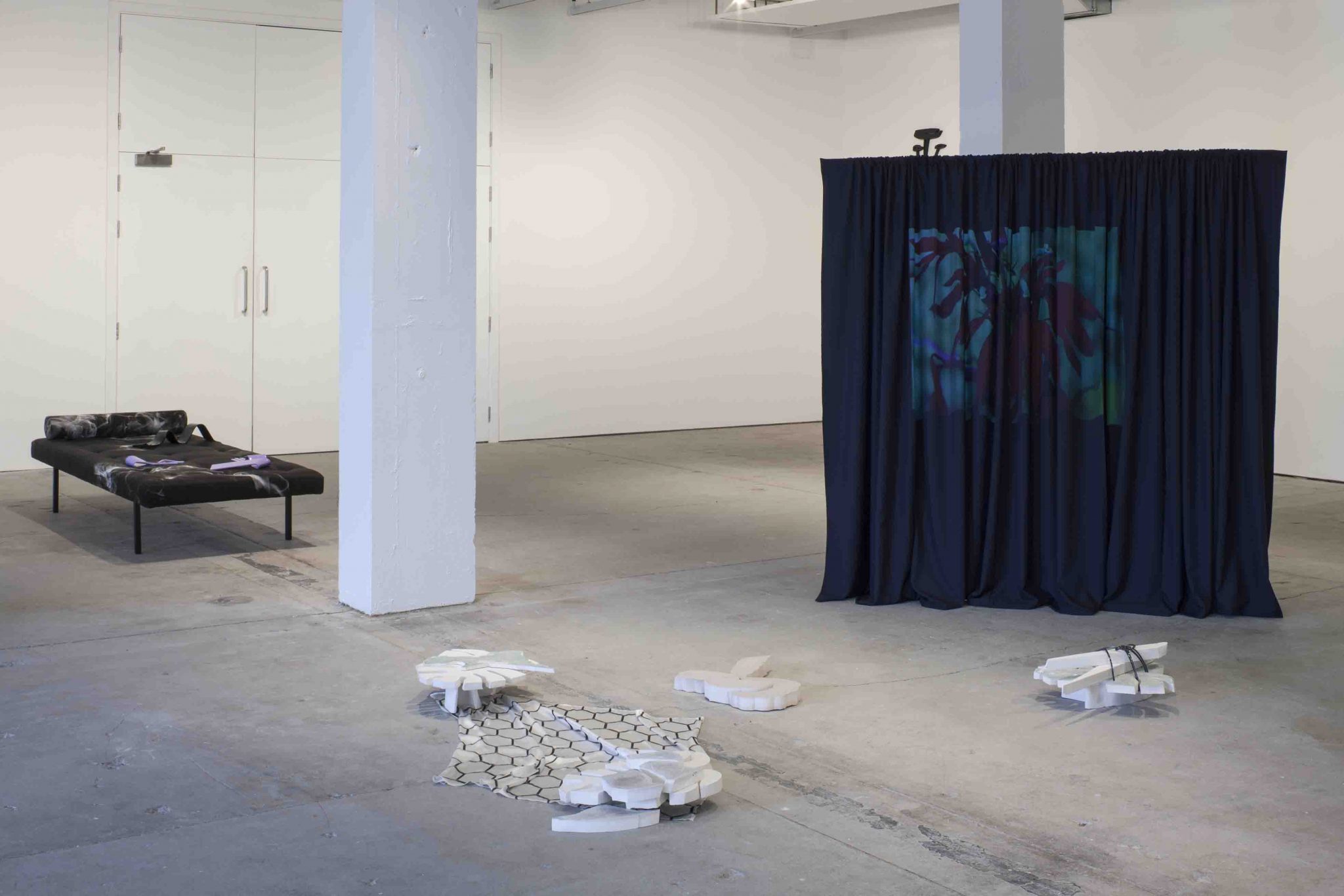The weather was, in local parlance, distinctly ‘taps aff’ on the day I visited Mood Is Made/ Temperature Is Taken. With my own top firmly in place (just a loosened collar as steam vent), I hoped for some respite from the glare of light on flesh and the searing heat in the canalside space of the Glasgow Sculpture Studios. But curator Quinn Latimer’s stated intention for this show was to ramp up the temperature, to ‘make mood’ through the gathering of work by 12 artists working in a range of sculptural practices encompassing video, print, object and scent.
Latimer’s curatorial rationale was achieved with varying degrees of success here – the barometer oscillated wildly in different areas of the gallery in terms of adherence to the broad themes of the exhibition. As such, some works seem ill at ease, misplaced or disjointed within the space, while others fitted neatly into the (sometimes) overheated claims made for them in the press release and accompanying publication. For Latimer, the artists operate in ‘this ambiguous, laconic place of mood, temperature, tone’. The exhibition is, apparently, ‘the world, only with its atmosphere heightened, drawn out, lucid, languorous’ and other alliterative phrases. Certainly, the interest in how appearance, surface and craft of things might evoke heat or take temperature can be seen in Zoe Williams’s hot objects in Cr.me Constellation (2014) in which bird-of-paradise and anthurium blooms lie across a slick, glamorous coral lacquer plinth holding a hand-glazed porcelain dish of all-over body cream. The wet finish and pulsating humidity of Latimer’s text can also find its parallel in the undulating silken sheets of Williams’s video Movements in Love (2014). Rachel Adams’s Long Reach (2014), a low modernist-style daybed with digitally printed smoke or steam billowing across the textile design, might be the place that the implied but absent figure of Williams’s installation flops down after bathing, undressing or sleeping. But while the temperature may be there, the mood and tone are disobedient. There’s none of Latimer’s ironic ‘totally, whatever’ Valley Girl vibe in Williams’s or Adams’s artwork or in that of Clara Ursitti, whose work in scent, Invader (2014), permeates the gallery at timed intervals with slow-burning notes that disorientate and unsettle. The tone of works by Lorna Macintyre, Tessa Lynch, Jennifer Bailey and Sarah Forrest are cool, composed and pared down across their prints, sculptures and video – there is no leakage or excess in their approach to making, and it is this composure and sense of stillness of their works that captures the attention.
Latimer’s mannered text reflects some of the qualities she identifies in the artworks brought together here, concerned as she is with surface, artifice and laconicism, but the tone or vibe of the writing doesn’t always synthesise with what we’re seeing. As an exhibition, the hoped-for languor can sometimes emanate from the visitor rather than the works, and at worst, the effect (or affect – Latimer fluctuates between the two interchangeably) is more ‘mood: bored’ than ‘mood board’. Some of the works simply don’t work in the context set for them, but this is perhaps less a failure of the works themselves and more a symptom of an awkward attempt to marry the intentions of curator and artist. For all its languidness, the show tries too hard. Where it does succeed is in presenting a compelling overview of the range and quality of current sculptural practices in Scotland today, regardless of any curatorial recipe. By setting the writing alongside rather than in front of the work, Latimer’s contribution may have worked more effectively as part of the show than as an attempt to encompass and package a multitudinous set of concerns and pratices.
This article originally appeared in the October 2014 issue
